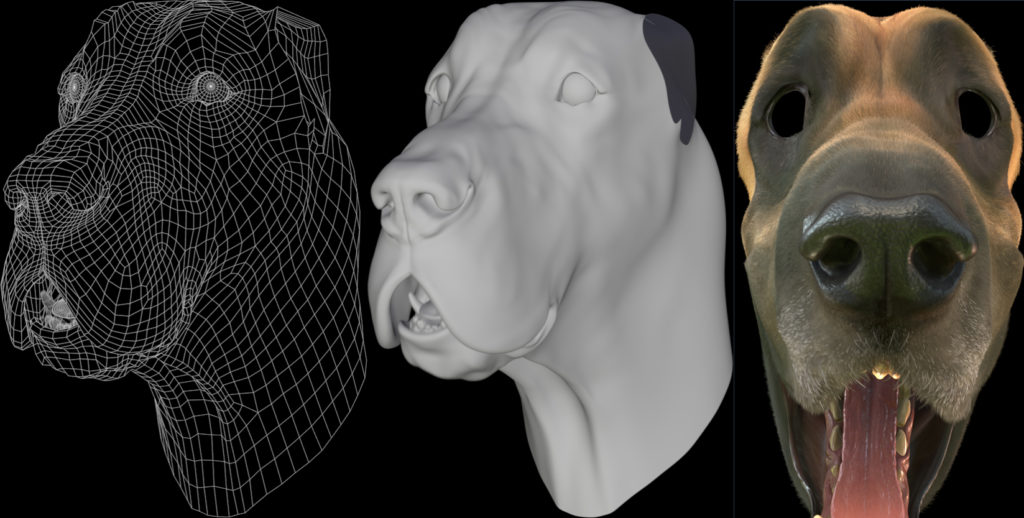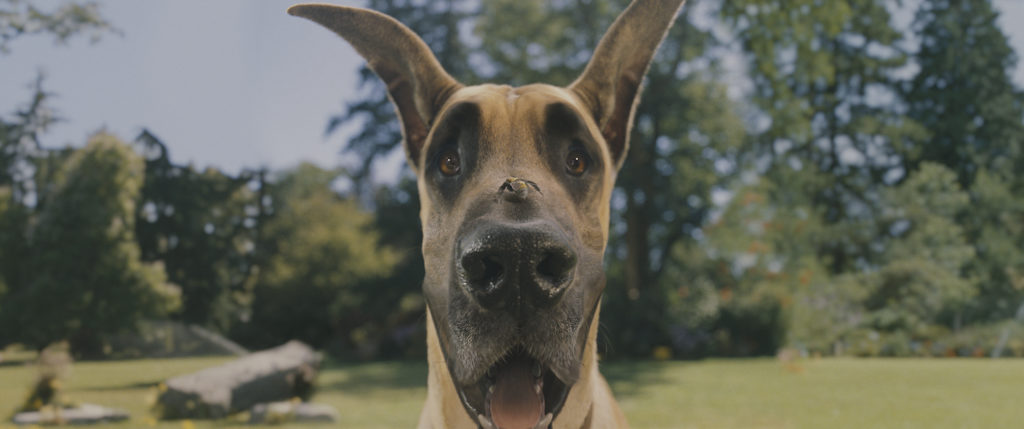
Animation World Network: Marmaduke – A Hybrid Breed Apart
Fox’s big-screen adaptation of Marmaduke (based on the long-running comic strip) goes further in its hybrid animation approach than Beverly Hills Chihuahua or other canine movies.
Cinesite in London was called on to place CG faces over live-action animals and Rhythm & Hues was tasked with creating fully-CG dogs and cats for some of the more outrageous moments (such as dancing or surfing). Craig Lyn served as overall visual effects supervisor.
« Essentially, we’ve taken the pipeline that was developed on a similar movie, Beverly Hills Chihuahua, » recalls Matt Johnson, Cinesite’s visual effects supervisor. « But on Beverly Hills Chihuahua, it was a fairly subtle style of animation with some lip sync and eyebrow raises. In Marmaduke, since they got Owen Wilson, they wanted to see him as the Great Dane. So there was a lot more facial animation work to capture the essence of Owen in the performance. I’d actually supervised Shanghai Knights, so I spent months with Owen and knew what he was like, and what we did was got the team of animators in London led by Alex Williams to basically watch every Owen Wilson movie that they could find. » According to Johnson, Wilson has a slight asymmetric jaw roll and brow lift that Cinesite brought to the facial animation of the dog. This meant pushing the canine pipeline a lot further.
Cinesite used a hybrid technique combining fully textured and lit CG passes with parts of the original photography re-projected over the animated geometry. To create the CG faces of the different canine characters, Johnson’s team built base head models in Autodesk Maya using photographic references of the dog actors. Blend shapes based on individual muscle shapes were then integrated into the rig using in-house tools. The muscles were further defined in the animation process. A customised rig was designed to mimic the muscle structure of a dog and this became the primary layer of canine muscles. The muscles were further defined on a secondary layer, mimicking the muscles of a human face. Cinesite additionally used RenderMan and Shake.
In many shots, Cinesite also added 3D eyes and whiskers. « Using Cinesite’s hybrid texture projection and CG fur techniques allowed our talking animals to sit seamlessly alongside the production’s live-action animal performances, » continues Johnson.
The final result was the creation of 10 live-action dogs in 650 shots that have had CG work seamlessly blended into their faces and around their necks to sit pixel by pixel alongside the real fur. « We had to make sure we could cut very precisely back and forth from visual effects and live-action character, » Johnson adds. « So we found that the projected texture technique essentially gave you 75% of the real dog and, when it broke down, we had to put in very accurate muzzles, teeth, eyebrow area, depending on what the animation requirements of the shot were to bring the two things together. No two shots are the same so you have a toolkit that allows an artist the freedom to cherry pick which bits of the shot are going to be texture or which bits are going to be CG fur and make the shot as convincing as you can based on what the real dog is doing. »

